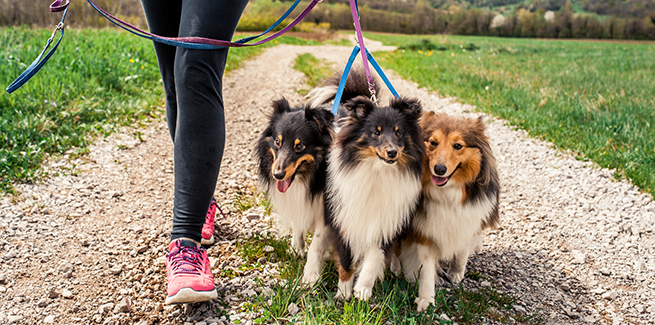New research identifies genetic factors contributing to small body size in some dogs

Researchers at Clemson University wanted to find the genetic basis for a dental condition in one particular breed and ended up discovering that it’s related to the dog’s body size.
Lead researcher Leigh Anne Clark, PhD, an associate professor of genetics and biochemistry at Clemson University, studies inherited diseases in canines. A new study, published last week in Proceedings of the National Academy of Sciences, grew from her work on conditions that affect Shetland sheepdogs.
The dental condition Clark was researching is known among Shetland sheepdog breeders as a lance canine, where the canine tooth points forward, like a lance or spear, instead of pointing down. It can also involve teeth that are missing altogether.
Because these conditions are rarely seen outside the Shetland sheepdog breed, Clark and her colleagues were sure it was a heritable trait. Finding the source could help breeders work toward eliminating it, as it’s considered a fault in show dogs.
The researchers collected 200 samples of lance canines from Shetland sheepdog owners all over the world to use in their genome-wide study.
Their efforts paid off in an unexpected way.
They found an association on chromosome 9 in a region that contains about 30 genes. After generating a gene sequence from a Shetland sheepdog who had two affected canines, they found two variations in two different genes that looked to be potentially problematic. One of those genes controlled the hormone responsible for normal growth.
That gave them an idea.
After going back and checking the height and weight of dogs in the study population, they discovered that Shetland sheepdogs with lance canines are, on average, one inch shorter and six pounds lighter than other Shetland sheepdogs. In a small breed that averages about 20 pounds and is 13 to 16 inches at the shoulder, that’s a significant variation.
Next, the researchers looked at those same two gene variations in the genomes of 224 other breeds and wild canids. The variations appeared only in toy breeds. And It turned out that the gene mutation they discovered is the same mutant growth protein found in humans with pituitary dwarfism.
NEWStat asked Clark about the findings.
NEWStat: What’s the connection between these teeth abnormalities and dog size?
Leigh Anne Clark: We know that dogs who are bilaterally lanced are more likely to have missing teeth, so that could be because they are also related to size [as the size of their mouths are smaller]. They could also be a consequence of altered skull shape. We are studying missing teeth in Shetland sheepdogs and hope to learn what other genetic factors are involved.
NEWStat: How common are lance canines in breeds other than Shetland sheepdogs?
LAC: Lance canines are fairly rare outside of the breed, but they have been reported in Italian greyhounds, dachshunds, and fox terriers.
NEWStat: How common are the gene variations on chromosome 9 in other breeds?
LAC: These gene variations were entirely absent from medium and larger breeds.
NEWStat: In what other breeds did you find the two gene variations?
LAC: We found them only in the Affenpinscher, Chihuahua, Maltese, miniature pinscher, papillon, Pomeranian, toy and miniature poodle, Cavalier King Charles spaniel, toy fox terrier, and Yorkshire terrier. They were most frequent in Yorkshire terriers, poodles, and toy fox terriers.
NEWStat: What does your research suggest?
LAC: Within the Shetland sheepdog breed, our research suggests that very small dogs are more likely to have dental abnormalities and require extra veterinary care. It may be best to avoid [breeding that’s] likely to produce very small Shetland sheepdogs.
The big picture here is that genetic variants that control size can also cause other phenotypes. This is also the case in humans, but fewer discoveries have been made thus far in dogs.
Photo credit: © Gettyimages/CasarsaGuru



